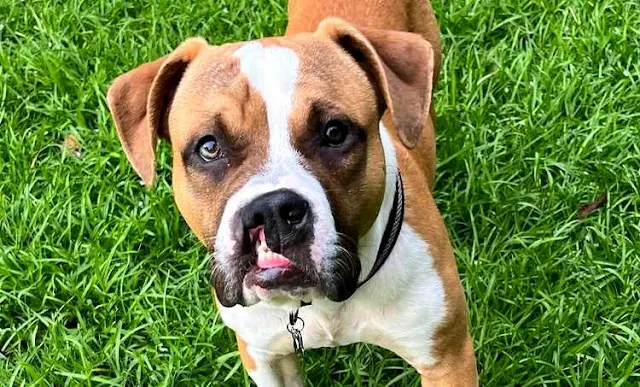When a puppy is born, it is important to have it examined by a veterinarian to detect possible problems. However, sometimes it is not necessary to be an animal health professional to realize that something is wrong. For example, when cleft palate occurs in dogs.
What is cleft palate in dogs?
Palatoschisis, or cleft palate in dogs, is a congenital malformation of the palate that must be treated immediately after the puppy is born.
This problem occurs because during the embryonic stage, the palate is not fully developed.
Cleft palate in dogs involves an opening between the mouth and the dog nose, similar to a cleft lip, but more serious.
This severity is a consequence of the fact that the survival of the animal will be threatened, since due to this problem it will not be able to feed properly and have breathing difficulties.
What causes cleft palate in dogs?
There are many factors that can cause craniofacial malformations in dogs.
In most cases, it is due to a genetic basis, so it is likely that if a dog suffers from a cleft palate, he will pass this inheritance to his puppies. However, it can also be an acquired problem.
In addition, brachycephalic dog breeds have a special predisposition to suffer from cleft palate. Especially females of the Bulldog, Boxer, Boston terrier, and Pug breeds.
Another cause of this malformation can be the exposure of the pregnant female to teratogenic agents, such as: X-rays, drugs, toxics, nutritional deficits, etc.
How do I know if my puppy has a cleft palate?
There are signs that indicate the presence of a cleft palate in dogs in a very obvious way.
If it is a first degree cleft palate, what will be observed will be:
- A misconfiguration of the nares.
- The teeth and gums of the maxilla will be seen.
When it is a secondary cleft palate, some of the signs that may be observed are:
- Continuous sneezing.
- Breathing problems.
- Coughing.
- Nausea.
- Runny nose.
In addition to this, the growth of the puppy suffering from this problem will be much slower than that of the other dogs in the litter. The reason for this is that he cannot suck his mother's milk well and a good part of it will escape through his nostrils.
His feeding is very complicated, so other dogs that do not have this problem will grow at a natural rate, while the cleft palate dog will have a hard time gaining weight.
Of course, if you open your puppy's mouth, you will be able to observe the cleft, which will be more or less important depending on the degree of malformation.
If you detect any of these signs, it is essential that you go to a veterinarian, as the dog's life is at risk.
Cleft palate in dogs diagnosis
When you go to the veterinarian with the dog, even if the signs are evident, an official diagnosis will be necessary.
For this, the professional will perform:
- An oral examination, observing the soft palate.
- An X-ray, in order to verify that there are no other pathologies. For example, in these cases, aspiration pneumonia is very common.
Can cleft palate be fixed in dogs?
Yes, there is a possibility that the dog suffering from cleft palate can be cured if it is treated quickly and with the intervention of a professional.
To begin with, the treatment will necessitate that the dog be fed a semi-liquid diet. To do so, it will be necessary to avoid the bottle and the mother's breasts, as we must remember that, due to the problem, the dog will not be able to suck well.
In some cases, an orogastric tube is required to be able to feed the dog until he reaches the correct age to undergo surgery to correct the problem. This is the definitive treatment, but it is not always possible.
Cleft palate in dogs surgery
It consists of a complex intervention that is usually performed when the puppy is about 3 months old. However, the animal must be healthy and strong to be able to face it.
There are several techniques to perform it, and it will be the surgeon who will select the appropriate one. The anesthesia will be adapted to the age of the dog.
After undergoing the procedure, it will be necessary for the animal to be in controlled rest with an Elizabethan collar.
A pharmacological and dietetic treatment will also be prescribed, and it will be necessary to comply with the corresponding revisions.
On the other hand, it will be necessary to closely observe the area after surgery to be able to quickly notice an opening of stitches or incomplete healing. If the latter occurs, the most appropriate thing to do is to operate the animal again, but after a reasonable period of time.
Unfortunately, the percentage of failed animals is quite high, even if the surgery is performed by experienced surgeons.

